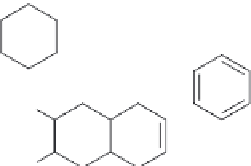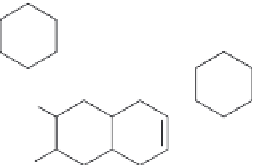Environmental Engineering Reference
In-Depth Information
Common name: Marsh herb, watercress
Distribution: India, Bangladesh, Sri Lanka, Southeast Asia, tropical Africa
Habitat: Semiaquatic habitats
Description: It is a prostrate, spreading annual herb loating in water. The stem
is about 50 cm long, and rooting is at the nodes. Leaves are stalkless and
linear-oblong. Flowers are white or greenish white.
Compounds and activities: A variety of bioactive compounds, such as
β-carotene, saponins, myricil alcohol, kaurol, cholesterol, sitosterol,
glucoside, germacranolide, enhydrin, luctuanin, and luctuandin, have
been isolated. Its lavoids, viz., baicalein 7-O-glucoside and baicalein
7-O-diglucoside, have been reported to inhibit Ehrlich's ascites carcinoma
(EAC) in mice (Sannigrahi et al., 2010). Its leaf extracts have also been
reported to cure leukoderma, bronchitis, paralysis, epilepsy, and convul-
sion, besides possessing laxative, antibilious (torpidity of liver), demulcent,
analgesic, and anti-inlammatory properties (Sannigrahi et al.,
2011).
OH
OH
HO
CH
2
O
O
O
OH
CH
3
H
O
O
O
O
CH
3
CH
3
HO
OH
O
germacranolide
baicalein 7-O-glucoside
OH
HO
OH
HO
O
O
OH
HO
O
HO
O
O
HO
OH
O
baicalein 7-O-diglucoside
























